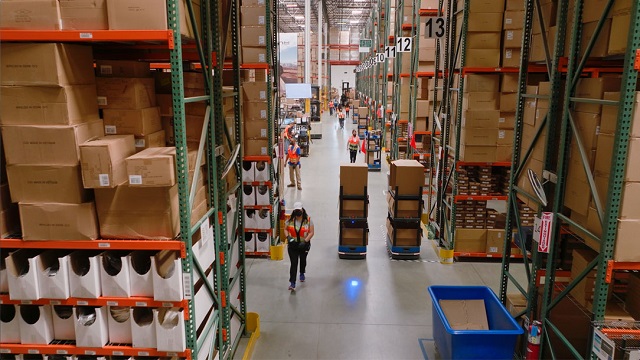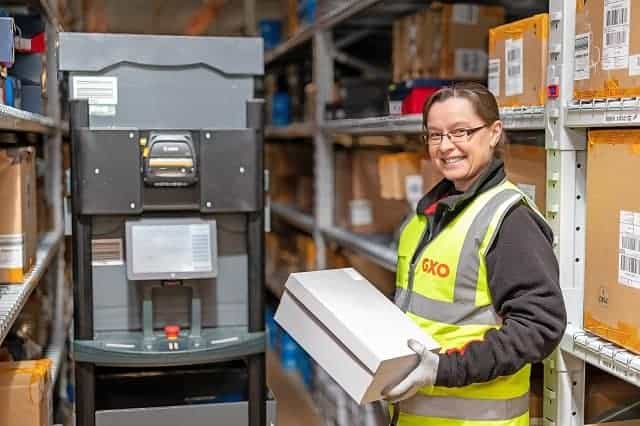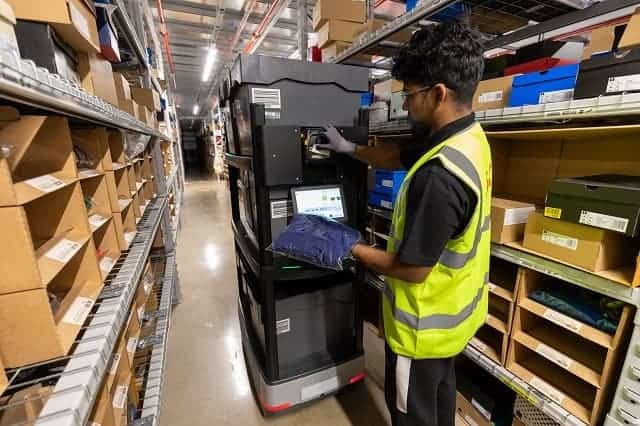
Warehousing can be a challenge for manufacturers and retailers of all sizes. Finding the right space, running an effective order fulfillment system and sourcing great talent are just some of the many challenges facing operations managers. And besides, how many growing companies have the deep pockets to fund these expenditures or even the in-house expertise to get a warehouse up and running?
That’s where third-party logistics providers come in. Commonly known as 3PLs, these are businesses that specialize in providing outsourced logistical support. Used effectively, a 3PL provider can be an invaluable asset, allowing you to focus on scaling up production (for manufacturers), procurement (for retailers) and streamlining your overall operations rather than get bogged down in warehousing hangups. By taking over the day-to-day management of your logistics needs, 3PLs let you focus on what you do best — growing your business.
3PLs offer a wide array of logistics services, but warehousing remains far and away one of their most centralized offerings. If you’ve been wondering how 3PL warehouses work, let’s take a closer look at their operations.
How does a 3PL warehouse work?
A 3PL warehouse is owned and managed by a third-party company. Once your goods arrive, the 3PL team will document the inbound delivery and then stock the fresh inventory. When orders come in, the entire physical fulfillment process — from picking an item off the shelf to readying and releasing it for shipment — will also be completed by the third-party provider.
If you observe these operations firsthand, it looks much like any other modern commercial warehouse. The biggest difference is behind the scenes: the 3PL is running the show, not you and your team. You’re ultimately entrusting the 3PL with the responsibility of handling your inventory and order fulfillment needs.
Benefits of using a 3PL warehouse provider
Why would retailers or manufacturers relinquish control of their warehousing needs? There’s a long list of compelling reasons, from affordability to scalability to efficiency. Here’s a review of some of the primary motives driving companies to consider a 3PL service:
Value
Warehousing is an expensive endeavor. For starters, there’s the acquisition cost of an adequate facility, which can run well into the millions of dollars even for a modestly sized space. There’s also staffing to contend with, not to mention ancillary expenses such as equipment purchases and building upkeep. These unavoidable costs can make it prohibitively expensive to run a warehouse, especially for smaller retailers or manufacturing companies.
3PLs, however, already have the necessary physical assets and personnel in place. Though it costs money to partner with these firms, they’re offering an essentially turn-key operation that’s tested, proven and optimized. Once a contract is established, a 3PL can quickly begin providing complete logistics support. Not only is this hit-the-ground-running approach faster than setting up internal warehouse operations from scratch, but it can also cost less upfront.
Ease of scalability
For small and midsize retailers or manufacturers — or any business, really — scaling up production is difficult. Along with expanding manufacturing capacity or expanding to new retail product lines or markets, companies should expect to need more of everything, from marketing support to raw materials to storage space for the increased output.
That last need is where a 3PL can come in. These firms typically offer a wide range of solutions for their clientele, the goal being to offer growing businesses a chance to capitalize on their success without being hamstrung by inadequate logistics. You’ll likely be able to work with your 3PL to increase your warehousing capacity as your inventory and storage needs grow.
This kind of flexibility would be difficult to match with an in-house operation, which would require more time, money and energy to secure additional facilities or space beyond what’s already available. These internal roadblocks could hinder scalability, particularly for smaller businesses with limited resources.
Improved efficiencies
3PLs are the experts. These companies live and breathe warehousing, fulfillment and shipping, and they’ve long ago put into practice effective tools and processes to promote efficiency. The best 3PL companies also boast the latest technologies and digital innovations to further maximize productivity and reduce warehousing costs.
Independent companies like retailers and manufacturers trying to self-manage their warehousing needs likely won’t match these efficiencies. Why? Because logistics is one aspect of their business, not the entire focus of it. It fits in like a puzzle piece within their larger supply chain, which itself fits into a larger operational matrix. But logistics operations are the bread and butter of 3PL providers. It’s why 3PLs put serious effort into developing best practices, leveraging technology and streamlining warehouse operations.
For example, innovations developed by 6 River Systems, such as system-directed picking and case replenishment optimization, have quickly become commonplace among the leading 3PLs in the industry. In fact, 70 percent of the top 3PLs are 6 River Systems customers. These segment leaders know that advanced technology is the key to improved order fulfillment, better warehousing techniques and happier customers.
Drawbacks of 3PL warehouse providers
Like anything else, there can be drawbacks to working with a 3PL, and you’ll have to decide whether these are outweighed by the potential benefits. Here’s what we’d keep in mind before signing on with an independent logistics provider.
Lack of control
When you contract with a 3PL, you’re willingly ceding control of the logistics and inventory management of your business. And while your ability to have certain inputs and insight might not completely disappear, it is somewhat limited. The relationship hinges on trust and communication.
That’s fine for many businesses, which are typically more than happy to free themselves from the responsibilities of managing a complex warehousing environment. But other manufacturing companies and retailers might not like the prospect of handing over their inventory management to a third party. Maybe that’s because they’ve incorporated certain processes that they want to remain in charge of, or it’s due to the nature of their personalized products (though the best 3PLs can accommodate customization needs through various value-added service options). For companies not yet ready to entrust logistics to a third party, keeping things in-house is worth the added complexities and responsibilities.
3PL service costs
While it’s costly to acquire, staff, and run a warehouse, you’ll also have to pay for 3PL services. The higher-priced options often include additional perks like larger trucking and distribution networks or more advanced automation and software solutions, but the monthly service costs can be high.
Businesses will have to consider whether the higher upfront costs of setting up an internally operated warehousing facility outweigh the monthly service fees charged by many 3PL providers. This is a particularly relevant concern for smaller retailers or manufacturers that may not have sufficient order quantities or inventory levels to justify recurring 3PL service fees.
What businesses should use a 3PL warehousing service?
Most types of manufacturing and retail businesses could benefit from a 3PL service. If your business is making goods at scale, the finished product needs to be stored somewhere. Paying a specialized logistics provider to handle inventory receiving, storage and delivery is an investment that buys access to state-of-the-art warehousing strategies and techniques while also helping your team gain back precious corporate bandwidth. By finding the right 3PL partner for your company’s needs, you can unlock savings, efficiencies, and potential you may not have even realized were possible.


